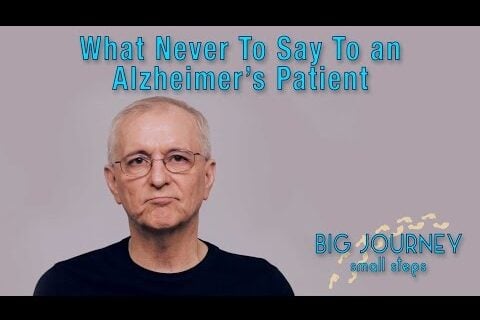By Andre Beaudry and Cathy Taylor
Long before a global pandemic made its way across Canada, the care of our society’s most vulnerable citizens has challenged many governments, communities and families. “Care work” was “women’s work,” and thus, underpaid and undervalued, leading to staff retention challenges and concerns about care quality, particularly in for-profit settings.
When COVID-19 struck, no one suffered more than residents in long-term care. According to the Canadian Institute for Health Information, 80 per cent of COVID-19 deaths in Canada have been in long-term care homes offering 24-hour nursing care, and retirement homes.
There has been plenty of debate on how best to respond to the long-term care crisis. Some solutions are focused on better regulations with more inspectors. Others race to solve staffing challenges. Some jurisdictions are focused on adding new beds to address overcrowding. But what needs addressing is the even bigger question about the ownership model of long-term care facilities and the Care Economy more generally.
Does ‘profit’ have a place in the care of our society’s most vulnerable? It’s time to look closer at the many social innovators using alternative models that put people, not profit, at the heart of community care.
COVID-19 has illuminated the strength of the non-profit approach and how it’s built to serve communities, in stark contrast to for-profit models. Ownership is key. Non-profit and co-operative housing and services, whether they are seniors’ homes, supportive housing or childcare centres, serve people locally and are accountable to communities through their volunteer boards of directors.
On the flip side, large for-profit chains, while presenting themselves as better-positioned to provide these local services and facilities, have shown inferior results in quality of care. According to a study published in the Canadian Medical Association Journal (2020), long-term care facilities run on a for-profit basis had more extensive COVID-19 outbreaks and more deaths than facilities run on a non-profit basis.
The non-profit model is an established one in Canada and is used to provide care services in many parts of the country. In the 1990s, Quebec introduced universal childcare to support an innovative solution to the challenges of inadequate quality of services in private day cares, increasing costs for families, high staff turnover rates and stagnant government funding. This policy was instrumental in getting a record number of women into the workforce — and the investment more than paid for itself in economic spin-offs.
According to Statistics Canada, 20 per cent more women worked in Quebec in 2016 than in 1996 when this new model was introduced, resulting in increased government revenue through provincial and federal taxes and fewer families reliant on social benefits.
Another social economy model, care co-operatives, is thriving in British Columbia. The Victoria Health Co-operative is a community-owned enterprise that brings together health care practitioners and member-owners to benefit from their treatments. All health co-ops are non-profit: the aim is to cover costs and surpluses are re-invested back into the services offered to patients.
Examples of social innovation often fly under the radar.
In 2018, the Government of Canada committed to developing a strategy to enable social innovation across the country. This was in response to 12 important recommendations from the Social Innovation and Social Finance Strategy Co-Creation Steering Group report, Inclusive Innovation: New Ideas and New Partnerships for Stronger Communities. The government subsequently promised the launch of a $50-million Investment Readiness Fund and $755-million Social Finance Fund.
Thanks to the success of the Investment Readiness Program, there are now more non-profits and co-operatives ready to scale up and replicate innovative solutions in their own communities. The government-promised Social Finance Fund, which has yet to be rolled out, could inject much-needed capital to support the conversion of for-profit care to non-profit or co-operative ownership.
In contemplating the gargantuan task of a post-COVID economic recovery, acceleration of the Social Finance Fund would go a long way to enabling investment in the care economy.
Establishing a national Social Innovation and Social Finance Strategy and a Social Finance Fund should be part of the solution to the care crisis, providing high-quality care, decent work for the women-majority care workforce and generating social and economic benefits in a low-carbon sector.
***
About Andre Beaudry and Cathy Taylor
Andre Beaudry is the Executive Director of Co-operatives and Mutuals Canada.
Cathy Taylor is the Executive Director of the Ontario Nonprofit Network.
—
This post was previously published on Quoimedia.com and is republished here under a Creative Commons license.
***
You Might Also Like These From The Good Men Project
 Compliments Men Want to Hear More Often
Compliments Men Want to Hear More Often  Relationships Aren’t Easy, But They’re Worth It
Relationships Aren’t Easy, But They’re Worth It  The One Thing Men Want More Than Sex
The One Thing Men Want More Than Sex  ..A Man’s Kiss Tells You Everything
..A Man’s Kiss Tells You Everything Join The Good Men Project as a Premium Member today.
All Premium Members get to view The Good Men Project with NO ADS.
A $50 annual membership gives you an all access pass. You can be a part of every call, group, class and community.
A $25 annual membership gives you access to one class, one Social Interest group and our online communities.
A $12 annual membership gives you access to our Friday calls with the publisher, our online community.
Register New Account
Log in if you wish to renew an existing subscription.
Username
First Name
Last Name
Password
Password Again
Choose your subscription level
- Yearly - $50.00 - 1 Year
- Monthly - $6.99 - 1 Month
Credit / Debit Card PayPal Choose Your Payment Method
Auto Renew
Subscribe to The Good Men Project Daily Newsletter By completing this registration form, you are also agreeing to our Terms of Service which can be found here.Need more info? A complete list of benefits is here.
—
Photo credit: iStock
The post Solution to Long-term Care Crisis Promised but Never Delivered appeared first on The Good Men Project.
Original Article










